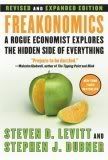Modeling Default Rates Using Exponential Decay
This was a guest post over on RateLadder.com. Debate here or in their comments.
RateLadder proposed an exponential decay model for predicting the 3 year default rates on Prosper loans in a post on his site rateladder.com. I was quite skeptical that this was a safe model to use since it baked in a pretty hefty assumption. After a little back in forth, he invited me to respond.
By modeling default rates using an exponential decay model, you're assuming that X% of the remaining loans will go bad in a certain time period. Of the remaining good loans, the same percentage will go back after the next time period. For example, if 10% of the loans will sour every year. If you started with 100, you'd expect 90 still good after 1 year, 81 still good after 2 years, and 73 still good after 3 years. But will the default rate be constant? I think not, and, by looking at the financial cycle of the borrower, we can think through why. When the loan is funded, the Prosper borrower receives a big chunk of change - up to $25,000. They're flush with cash and can easily make the loan payments even if things not handled well. I'd expect lower than typical default rates. The extreme case is someone who borrowed the money and didn't do a thing with it. For one of my loans (picked at random), the borrower could make over 2 years worth of payments just by sitting on the cash. Not financially smart, but illustrative on how repayment can look good even when it's not sustainable.
After some time, the borrower will either be successful in their loan use (pay-off credit cards, start business) or not (rack up new credit card bills, business fails). This is loan payment crunch-time. The financially weak borrowers will default. Compared to the cash-flush period, I expect defaults to run higher as financial Darwinism hits and the weaker loans go bad. Following this crunch period and financially weaker borrowers falling out, I would expect that the remaining loan pool would be stronger with fewer defaults. There will be defaults but the remaining loans are more responsible and financially stable with the weak ones already in default.
Thus far, we have some fabulous hand waving. It looks like common sense, but common sense is sometimes deceiving. Moody's has kindly provided some insight and investigation to help with the common sense. In section of their 1999 Global Credit Research report discusses techniques used to model uncollateralized bond default rates, they discuss an "aging effect" and how default rates vary with time in a way very similar to the one hand-waved above. If it's good enough for them, there must be something to it.
The best test is to look at Prosper's loan data. Does it show aging effects? For this, the loans were placed into age groups based on month and the 3-year default rate predicted using RateLadder's exponential decay mode (ugly calculation: r = 1-e^(ln(pct_good_loans)/t). If the default rates change with age, there's an indicator for caution in using the exponential model.
As we can see, there are large variations in the loan failure rates, even after ignoring the first few months. Equally, most loan grades show some "aging effect". D is the most profound with a ramp up to a crunch followed by a slow decline.
But is the exponential decay model good enough? For the AA space, predictions for the 3-year default rates range from 1.5% to 9% (and more) based on with age group is used. The D space shows variations from 15% to 38%. HR is ugly regardless of what we do - the lender is screwed regardless of how it's modeled. From these curves, it is difficult to determine which predicted default rate should be used. This validates that the "aging effect" should be considered and makes it a dangerous model to use without a more careful understanding of the dynamics involved.







No comments:
Post a Comment